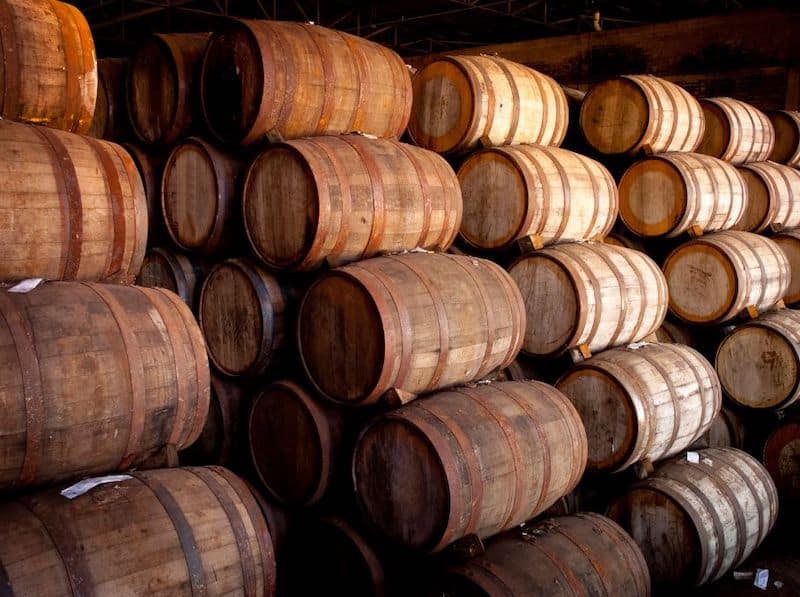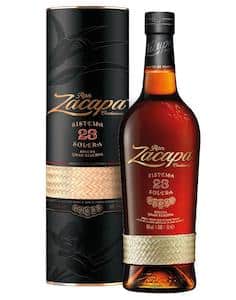On many bottles of Rum, you can find the term "Solera" written on the label. However, what sounds like a treatment involving the sun, actually describes a labor-intense and controversial method of aging Rum.
To better comprehend what Solera aging means and how it makes Rum better, you need to understand why it's done and how the process works.
What is Solera aging?
The term Solera describes the process of aging liquor like Rum, Brandy, or Sherry by gradually blending products of different ages.

The resulting product is a mix of all the different products involved in the Solera system. That, in turn, means that the average age of a spirit increases gradually over the course of years.
But as this description is quite hard to understand if you've never heard of the Solera system, let's try to tackle the topic in more practical terms.
The Solera aging process
Let's start and discuss the term Solera. Solera, in our case, means the entire collection of barrels involved in the blending and aging process.
Picture the Solera as barrels stored on different levels or rows. The lowest row, the one closest to the floor, is the one that carries the Rum that's nearest to bottling. The higher the row, the younger the Rum in the barrels.

When Rum from the lowest rows is withdrawn, the barrels are only emptied to a certain extent (e.g. half).
The Rum removed from the lowest barrels is then sometimes transferred to other barrels or vats for a final stage of maturing before the spirit is bottled. Sometimes it gets bottles straight away.
The barrels from the lowest row are now half empty. So, to fill them up again, Rum from the barrels one row above is used. Then these barrels are filled with Rum from one row above, and so on.
Finally, the top row barrels are filled up with a specific blend of aged Rums. These are aged separately in a conventional process outside the Solera system.
Why do Rum producers use Solera?
The theory behind Solera is that young Rum is heavily influenced by older Rums when put together into the same barrel. That means the young Rums develop faster and gain a higher level of maturity in terms of taste.
Basically, the system is an elaborate method for blending. As you never remove all the liquid from a barrel, small amounts remain in there from when the Solera started. So, a few drops in the Solera Rum are usually very, very old and mature.
But maturing young Rum isn't the only reason. The heavy blending of Rums of different ages also creates an increased degree of consistency in the final product that's harder to achieve otherwise.
The problems with the Solera aging system
Understanding the process of Solera aging, you can immediately tell that this process requires a lot of work. That is also one of the main criticisms of Solera aging - it's extremely labor intensive.
Drawing from one barrel and pouring into another one requires care and concentration. In most Solera systems, the barrels are fixed - meaning workers and pumps have to move around them.

But additional cost of labor isn't the only negative. As the Solera system can never dry out, there's always a certain amount that can't be sold. So the producers pay for an inventory they can't touch.
From a consumer perspective, Solera Rum is often misunderstood and labeled a fraud.
The problem here is that the age statement of Solera Rums tends to be high (e.g., Zacapa 23). Yet, that doesn't mean that the Rum is aged 23 years. It simply means that the Rums in the system are up to 23 years old.
The younger Rums only aged six years, and ultimately, it's hard to tell the average age of the spirit in the bottle. However, knowing what Solera is, you can more or less ignore the age statement and taste it.
There are quite some good Solera Rums out there, so it would be a shame to miss out on them because you erroneously think a brand "tricks" you.
The Advantages of Solera Aging
As I mentioned, the reason for Solera aging is that young Rum benefits from being blended with older Rums.
Makers of Solera Rum claim that the never-ending mixing and blending results in a richer, more balanced, and smoother Rum. As the whole Solera matures, the liquid slowly gets better and better.
Every year, the Rum quality slightly changes and creates a better-tasting product. At the same time, the individual bottles will always be of very similar taste and quality.
Choosing a Solera Rum
Choosing a great Solera Rum can be tricky. Remember, age statements on Solera Rum bottles don't mean a lot. It's a nice side-info but shouldn't influence your choice too much.
With Solera Rum, it's basically all about tasting the different options. You have to try and decide individually if it's to your liking or not.
Further, also take prices into account and make a decision on which one to buy. If your local liquor store allows sampling, great, that saves you the money for try and error.
So, if you're new to the world of Solera Rums, there are some recommendations to get you started. Some brands have been following the Solera aging process for a long time and deliver excellent Rums.

Zacapa, a Rum brand from Guatemala, is one of them. Their Zacapa 23 and the XO expression undergo quite a complicated aging process that also includes time in Sherry and Port casks.
Santa Teresa is another brand producing an excellent Solera Rum. This manufacturer from Venezuela uses a four-step Solera system.
The Rum used in the first step is already a blend of various aged Rums. So, the final product is a result of significant aging.
Is a Solera system always the same?
One of the problems with the term Solera is that it doesn't follow an exact definition. Every Rum brand applying the Solera aging system uses its very own take on the general approach.
Santa Teresa follows a model that can also be found with Sherry and Brandy. Zacapa has its very own way that is amongst the most complicated Solera setups.
Some use only Rum barrels others also include Sherry and Port wine casks. Some use a three-level Solera setup, while others use four or even more levels.
These differences in the Solera setup, combined with the confusing age statement on the bottles, sparked a discussion in the Rum community. All of the above makes it pretty hard to compare different Solera Rums, except for tasting them one by one.
To sum it up
Solera Rums follow a complex process of aging and blending. That helps mature younger Rums faster, creating a more balanced and complex Rum.
Solera systems vary widely from brand to brand. So it's hard to compare the bottles. On top, the age statement doesn't tell you much about the liquid in the bottle. It's more of a name for easier reference and only indicates the oldest Rum in the Solera system.
If you're new to Solera Rums, start by trying an established product like Zacapa 23 or Santa Teresa 1796.

